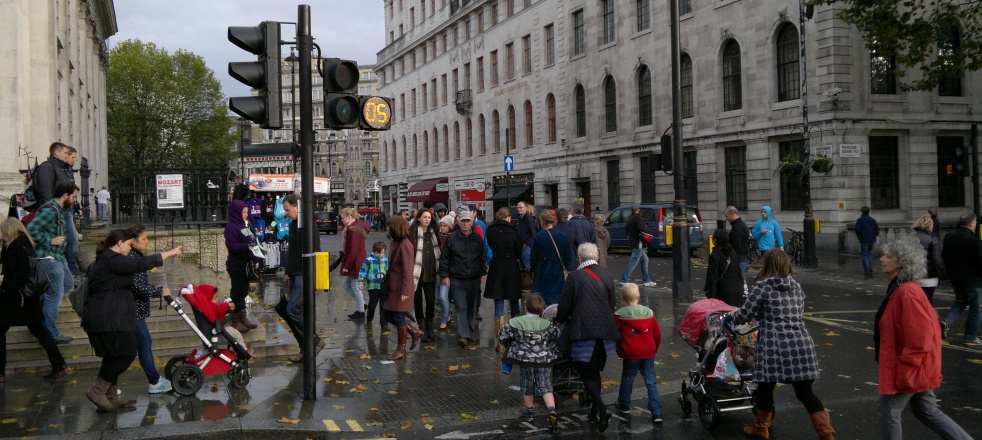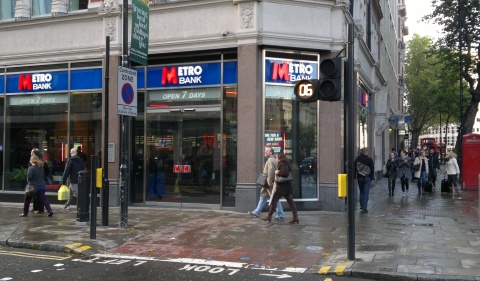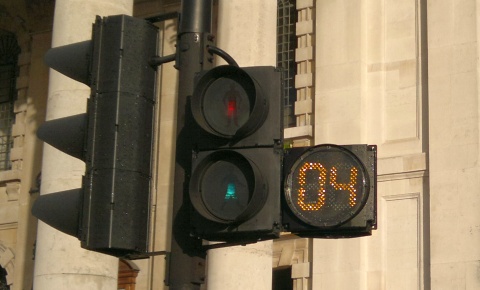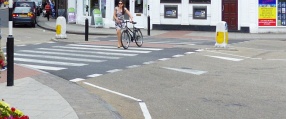Pedestrian Countdown Signals

Pedestrian countdown timers show the amount of time left to cross the road before the red man appears. This allows pedestrians to decide if they have enough time to cross the road.
The countdown display is shown on the opposite side of the road, next to the green and red man signals. After the green man has signalled to pedestrians to start crossing the road, there is a 'blackout' phase where no pedestrian signals are shown. During the blackout phase, the countdown begins, ending with a red man pedestrian signal.
The duration of the countdown varies depending on the signal timings at the junction.
Disadvantages
- Can't be used at Puffin or Pelican crossings
Bristol Context
Currently, there are no plans to install Pedestrian Countdown Signals in Bristol. When installing new traffic signals or refurbishing old traffic signals, Bristol City Council aim to place pedestrian signals (the green/red man) on the near side of the road, next to the crossing button. This is to keep crossings consistent across the city.
Pedestrian Countdown Signals, however, must have the pedestrian signal on the opposite side of the road. It is believed this could cause confusion with pedestrians.

Restrictions
See 'Bristol Context' above.
- Can only be used at junctions with traffic lights
There's also some general restrictions to note for all schemes
Advantages
- Pedestrians feel less rushed when crossing
- Gives more confidence to mobility impaired pedestrians, who may cross more slowly
- Pedestrians who didn't see a green man signal can decide if they have enough time to cross the road
- Some installations can allow a small reduction in delay to motorised vehicle traffic

Effectiveness
Public opinion
Pedestrian countdown signals are well liked by pedestrians, especially those that are mobility impaired.
Mobility Impaired people and children prefer crossings with Pedestrian countdown timers compared to those without timers.
Pedestrians felt much safer when using a pedestrian countdown signal, and they also felt less rushed when crossing the road.
Vehicles
The system can allow for less green man time to pedestrians, which can then be re-allocated to motor vehicles.
Safety effects
Pedestrian countdown timers do not increase safety for pedestrians, but do not appear to reduce safety either.
There is little research from the UK into pedestrian countdown timers because they are quite new.
There may be a safety benefit in using pedestrian countdown timers at busy pedestrian locations, and a safety reduction where there are few pedestrians.
Advanced information
Public opinion
The findings above are primarily based on a weak study from TRL which assessed recently installed pedestrian countdown signals in London (TRL, 2011). The research found 83% of people surveyed liked pedestrian countdown, and for mobility impaired pedestrians this rose to 94%. 69% of mobility impaired pedestrians and 56% of children preferred pedestrian timer crossings. 78% of pedestrians felt safe on crossings without pedestrian timers, rising to 91% when pedestrian timers were installed.
Accidents
For safety effects, the TRL study found no increase in serious conflicts between vehicles and pedestrians (a conflict is where both a pedestrian and vehicle try to use the same space at the same time). A serious conflict can also be explained as a near miss, or a very near miss. There were different results for low level conflicts - low level conflicts are where a motor vehicle and/or a pedestrian adjusted their speed in a controlled manner to avoid a collision. At busy sites, low level conflicts fell (In Bristol, a busy site would be the crossing between Colston Avenue and Baldwin Street), but at quieter sites low level conflicts increased. Whilst this is the best report on pedestrian timers, it’s weak methodology means confidence in results is low. The overall outcome of this report is to suggest a very small safety reduction from pedestrian timers.
A study from the United States used a strong methodology to assess collisions at pedestrian countdown timers (Pulugurtha et al., 2010). This study cannot carry significant weight because it was not conducted in the UK, and the crossing designs differ slightly to those in the UK. It was found that, on average, there was an 11% reduction in collisions between motor vehicles and pedestrians, however this result was not statistically significant. With regard to all collisions at the pedestrian timers sites (including those only involving vehicles), there was a reduction of 13.6%, and the result is statistically significant. These results compliment a review which averaged findings from a selection of very small studies from the United States, which found that, on average, pedestrians complied more with pedestrian signals when timers were used (Kennedy & Sexton, 2009).
References
Kennedy, J. & Sexton, B. (2009) - Literature review of road safety at traffic signals and signalised crossings. (PPR436) Transport Research Laboratory. Crowthorne, UK.
Pulugurtha, Desai, Pulugurtha (2010) Are Pedestrian countdown signals effective in reducing crashes? Traffic Injury Prevention 11 pp. 632 - 641.





